#Peter Carl Fabergé
Text

Fabergé
L'Uovo del palazzo di Gatčina è una delle uova imperiali Fabergé, un uovo di Pasqua gioiello che l'ultimo Zar di Russia, Nicola II donò a sua madre l'Imperatrice vedova Marija, nel 1901.
Fu fabbricato a San Pietroburgo nel 1901 sotto la supervisione di Michael Perkhin,per conto del gioielliere russo Peter Carl Fabergé.
L'uovo d'oro è coperto da vari strati di smaltato bianco traslucido su un fondo arabescato con tecnica ghiglioscé e dipinto con un delicato disegno di rose rosa e ghirlande di foglie verdi e oro legate con fiocchi di nastri rossi in una varietà di festoni.
File di perline dividono l'uovo in dodici pannelli: verticalmente in sei spicchi ed orizzontalmente lungo il bordo dell'apertura. Alle due estremità sono fissati diamanti tagliati come lastre sottili, probabilmente per coprire il monogramma e l'anno del dono, che però sono stati rimossi. L'interno è foderato in velluto.
La parte superiore dell'uovo si apre per rivelare una riproduzione in miniatura, in oro di quattro colori, della residenza invernale principale dell'Imperatrice vedova: il palazzo costruito a Gatchina, un villaggio 45 chilometri a sud-ovest di San Pietroburgo, per il conte Grigorij Grigor'evič Orlov ed in seguito acquistato dallo Zar Paolo I.
La miniatura riproduce nei dettagli anche l'area attorno al palazzo, sono presenti cannoni, una bandiera, una statua di Paolo I, ed elementi del paesaggio.
58 notes
·
View notes
Text
Fabergé Eggs

Fabergé Eggs, perhaps considered one of the most famous examples of exquisite and luxurious craftsmanship to this day.
Fabergé eggs were originally commissioned by the Russian Imperial family in the late 1800s AD.
Tsar Alexander III (10 March 1845 – 1 November 1894) wanted a richly jeweled egg as an Easter gift for his wife, so Russian jeweler Peter Carl Fabergé (30 May [O.S. 18 May] 1846 – 24 September 1920) got to work and produced very first Fabergé egg in 1885 AD.
And like Easter eggs you may find hidden in your shrubs or gutters, these eggs were also intended to contain a surprise inside.
Initially, the first Fabergé egg was to contain a diamond ring, but after specific instructions given by the Emperor, the egg could be opened to find a ruby pendant instead.
Over the course of the next two decades, ten eggs were produced for the family during Alexander III’s reign, starting a dazzling tradition that his son Nicholas II (18 May [O.S. 6 May] 1868 – 17 July 1918) would carry on for his wife and his mother every Easter.
The popularity of eggs-travagant gifts spread well beyond the Imperial family, and soon, other wealthy families began commissioning their own eggs.
The eggs then began to represent great wealth and luxury that owning a Fabergé egg was considered a status symbol.
And with the skill level and time that it took to craft up just one Fabergé egg – up to one year per egg – it’s no surprise they come with such a high value.
The intricate Fabergé egg-making process began by creating a design for the egg and then the outer shell would start to come to life.
The team of goldsmiths would craft the eggs out of precious metals like gold or silver.
They were each decorated with intricate engravings, filigree work and other decorative elements.
And while his competitors used a standard palette, Fabergé wanted to experiment with more colors.
He created resplendent yellows, mauves, and all shades of greens — coming up with over one hundred and forty new colors.
Just as important as its exterior, the Fabergé egg’s interior was given just as much attention to detail.
A team of jewelers would work on creating a surprise to be hidden inside the bejeweled shell.
These surprises could be anything from miniature portraits of the recipients’ husbands to tiny replicas of famous landmarks.
The artists behind these miniature works of art were some of the best miniature painters, sculptors and engravers of that time who used a variety of material, including enamel, precious stones and even hair to create their work.
Finally, once all of the intricate pieces were complete, they were assembled by a team of skilled craftsmen to create the final product.
The egg was then presented to the recipient and would become a treasured family heirloom for years to come.
Unfortunately, the House of Fabergé was forced to close its doors during the Russian Revolution in 1917.
Fabergé and his family fled Russia.
Many of the Fabergé eggs were sold, lost or smuggled out of Russia during this time, but now, many of them are housed in museums like the famous Fabergé Museum in St. Petersburg, Russia.
However, history came full circle when in 2007, with new ownership and direction, the company announced the reunification of the brand with the Fabergé family.
This new chapter set the stage for a total revitalization of the Fabergé name and philosophy, which are in tune with its original values and spirit.
#House of Fabergé#Fabergé Eggs#Russian Imperial Family#Tsar Alexander III#Peter Carl Fabergé#Easter eggs#Tsar Nicholas II#Russian Revolution (1917)#Fabergé Museum#St. Petersburg#Russia#craftsmanship#family health#status symbol#jewelries#House of Romanov#Easter#Happy Easter#Easter Sunday#Resurrection Sunday#eggs
41 notes
·
View notes
Photo

1892 Faberge Diamond Trellis Imperial Easter Egg. Art Nouveau. The Diamond Trellis egg is a jewelled enamelled Easter egg made by August Holmström under the supervision of the Russian jeweller Peter Carl Fabergé in 1892. It is one of the Imperial Fabergé eggs, made for Alexander III of Russia, who presented it to his wife, the Empress Maria Feodorovna.
#1892#faberge#egg#easter egg#diamond trellis#art nouveau#august holmström#peter carl fabergé#alexander iii of russia#empress maria feodorovna#maria feodorovna#faberge eggs
24 notes
·
View notes
Text
24 settembre … ricordiamo …
24 settembre … ricordiamo …
#semprevivineiricordi #nomidaricordare #personaggiimportanti #perfettamentechic
2022: Rita Gardner, Rita Schier, attrice statunitense. Il suo debutto nell’Off-Broadway nel 1958 e due anni dopo ottenne uno dei suoi maggiori successi recitando nel ruolo della protagonista Luisa in occasione della prima del musical The Fantasticks. Oltre alla sue numerose apparizioni teatrali a New York, recitò anche in numerosi altri teatri degli Stati Uniti. Apparve anche in diversi film e…

View On WordPress
#24 settembre#24 settembre morti#Baronessa Audley#Corine Rottschäfer#Dorothea Baird#Fabergé#Gisèle Casadesus#Karl Gustavovič Faberže#Lyle Bettger#Neil Hamilton#Peter Carl Fabergé#Ricordando ..#Ricordiamo#Rita Gardner#Rita Schier#Sarah Churchill#Sarah Millicent Hermione Tuchet-Jesson#Sergio Bergonzelli#Siro Carme#Uova Fabergé#Virginia McSweeney
0 notes
Text
Fabergé-Eier
von Sabine Noelle-Wying
Voilà, ein Ei!Eine junge Amerikanerin aus einfachen Verhältnissen geht nach Paris, um kochen zu lernen und ihren Liebeskummer zu überwinden. Am ersten Tag erfährt Sabrina (Audrey Hepburn), wie man Wasser erhitzt, am zweiten Tag, wie man ein Ei aufschlägt – ganz schnell, „nur aus dem Handgelenk“.
Bildquelle: Sabrina
Denn, so doziert der französische Maitre, während er…

View On WordPress
1 note
·
View note
Text
Carl Faberge Eggs...
El de los huevos de los Zares...

Peter Carl Fabergé, conocido también como Karl Gustavovich Fabergé, fue un joyero ruso. Es considerado uno de los orfebres más destacados del mundo, que realizó 69 huevos de Pascua entre los años 1885 a 1917, 61 de ellos se conservan.
#Peter Carl Fabergé conocido también como Karl Gustavovich Fabergé fue un joyero ruso. Es considerado uno de los orfebres más destacados del#¿Esta es la imagen y algunos datos (O no) la “Historia” la pones tú? ¡La tuya! ¿Lo harás...?
3 notes
·
View notes
Photo
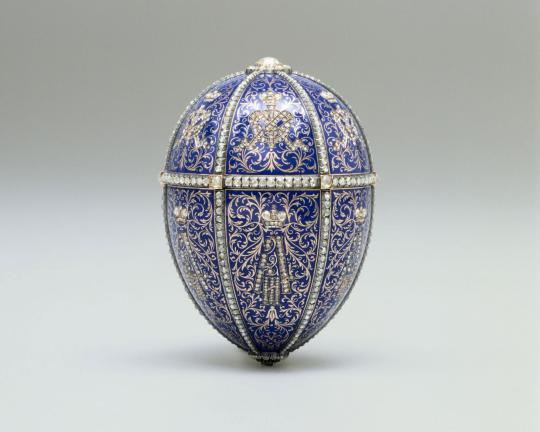


“Between 1885 and 1916, the jeweller Peter Carl Fabergé made fifty eggs for the Imperial family, taking the concept of the humble Easter egg and revamping it into a spectacular and bejewelled object d’art- an artefact, essentially useless, but so ostentatiously eye-catching, that it could only be conceived of for a king.”
485 notes
·
View notes
Photo

A Gallery of Fabergé Eggs
The tradition of giving miniature Easter eggs was not a new one but when Tsar Alexander III (r. 1881-1894) commissioned Peter Carl Fabergé (1846-1920) to make one for Easter in 1885, a legend was born. Over 50 eggs were made by the masters of Fabergé's workshop, many of them for the Russian imperial family as Alexander and then his son Nicolas II (r. 1894-1917) gave these to their wives and, in the case of the latter, also to the Dowager Empress each year at Easter.
Continue reading...
85 notes
·
View notes
Text
Happy #WorldAnteaterDay!
From House of Fabergé menagerie, here is a diamond-eyed jasper anteater figure purchased by The Walters Art Museum founder Henry Walters on a trip to St. Petersburg in 1900. Now in the museum’s permanent collection.

Anteater
House of Fabergé (Russian, est. 1842) (Manufacturer)
Peter Carl Fabergé (1846-1920)
c. 1900
jasper, diamonds
The Walters Art Museum
"This tiny diamond-eyed anteater was purchased by Henry Walters, founder of the Walters Art Museum, on a trip to St. Petersburg in 1900. The House of Fabergé began making hardstone animals in the 1890s and they proved popular with their elite clients. Queen Alexandra (wife of the British King Edward VIl) built a large collection, and production peaked in the years immediately before the outbreak of the First World War in 1914.
Objects such as this anteater were inspired by Japanese netsuke. Carl Fabergé owned over 500 of these. He married this admiration of Asian art with the rich Russian tradition of hardstone carving. The anteater is unusual among Fabergé's menagerie, although examples in bloodstone and quartz are also known.”
#animals in art#animal holiday#european art#20th century art#19th century art#anteater#World Anteater Day#sculpture#figure#figurine#jasper#precious stones#gemstones#Faberge#Russian art#Walters Art Museum
31 notes
·
View notes
Text

Blue Tsesarevich Constellation Egg (1917)

Design Sketch
Background Notes: H. C. Bainbridge in Peter Carl Fabergé (London, 1949) has left us this moving account of the last Imperial Easter egg received by the Tsarina Alexandra Feodorovna:
At Easter, 1916, Nicholas II was at the Front, and he telegraphed Fabergé to deliver this year’s Egg on his behalf, to the Czarina at Tsarkoe Selo. On Easter Eve, Eugène Fabergé again acted for his father and for the last time. Received by the Empress, who was surrounded by her five children, he handed to her what must have been the most austere of any object made by Fabergé for the Imperial family, an Egg made of blackened steel with the Empress’s initials in gold.
The egg now has a polished, silvery look rather than the original dull blackened steel finish. It is possible the finish of the egg may have deteriorated during the years in storage in the Armoury and that it was polished to arrest further deterioration. According to Fabergé, Proler, & Skurlov, in Fabergé Imperial Easter Eggs (London, 1997), the egg was designed by Gustav Shkilter, a relative of Carl Fabergé’s, and made by the Putilovskii steel plant, which was renowned for its high-quality steel.
Alexandra sent a telegram to Nicholas II at the front, which said in part:
[Eugène] Fabergé has just brought your delightful egg for which I thank you a thousand times. The miniature group is marvelous and all the portraits are excellent. (Fabergé, Proler, & Skurlov, Fabergé Imperial Easter Eggs, London, 1997)
This was one of the tsarina’s few positive missives at this time to her husband. By now almost totally under the influence of Rasputin, she was writing frantic letters to Nicholas, imploring him to dismiss one minister of state after another. Most times, Nicholas agreed and did so, but Alexandra’s advice was disastrous to the tsar’s-and Russia’s-cause. Rumors spread that Rasputin, a starets or an unordained holy man, was the tsarina’s lover, that she was in league with German spies, and that she was betraying her adopted country. None were true. Within months the murdered Rasputin’s body would be pulled from the frozen Neva, and the tsarina would drift into a world of hazy sadness and resignation, a world her husband would largely share with her.
The invoice for the 1916 Tsar Imperial Easter eggs has been lost. However, other account books and correspondence survive that indicate that the two Easter eggs produced for 1916 together cost 13,347 rubles. As a note of caution, this total probably includes other, smaller, unspecified items included in Fabergé’s bill.
An expert valuation was made of this egg in 1927. Found by Fabergé, Proler, & Skurlov, the valuation noted that the artillery shells were rusty. The valuation assessed the egg’s worth at 14,205 rubles. George W. Terrell Jr., professor of history and geography at Gadsden State Community College, Alabama, has drawn to the attention of the authors a certain irony regarding the first and last Tsar Imperial Easter eggs given to Alexandra Feodorovna. The first egg, the 1895 Rosebud Egg, was decorated with arrows, and the last, the 1916 Steel Military Egg, rested on artillery shells. How very different was the symbolism inferred by these two types of weapons!
So, incongruously, thirty years of Tsar Imperial Easter gifts, most of them works of great artistry and technical merit, would end with this, an object described by A. Kenneth Snowman as “a banal example of Kitsch” (Snowman, Carl Fabergé Goldsmith to the Imperial Court of Russia, London, 1979). Not only had a glorious Easter tradition ended, but so too, had a great epoch in the history of the decorative arts.
9 notes
·
View notes
Text
Glorious Carbio von Time for Machine https://time4machine.de/products/glorious-cabrio Ein Bausatz eines Oldtimer Modellautos
Seit jeher fühlen wir uns von Gegenständen angezogen, die mit Seele , Sinn und Idee hergestellt wurden. Die Menschen investieren viel Aufwand in das Design und den technologischen Fortschritt von Autos, Mechanismen, Flugzeugen und Dampfmaschinen. Selbst nach langer Zeit faszinieren diese Gegenstände unseren Geist wie die mechanischen Automaten der Vergangenheit und die Figuren von Zauberern wie Peter Carl Fabergé . Ihre Erfindungen werden in Museen präsentiert und in Privatsammlungen ausgestellt.
In der modernen Welt besteht aufgrund moderner Technologien die Möglichkeit, selbst ein Zauberer zu werden, und Sie können persönlich etwas so attraktives und innovatives schaffen.
Deshalb haben wir uns zum Ziel gesetzt, das schönste Baukasten der Welt zu schaffen. Das Set, das Sie leicht zu einem mechanischen Kunstwerk zusammenbauen können . Time for Machine ist das erste exklusive Konstruktionsset, das Ihre Aufmerksamkeit verdient.
#ZeitloseSchönheit#ModellLiebhaber#KreativerModellbau#MechanischeFinesse#LiebezumDetail#KunstvollesHandwerk#EleganzimDetail#MechanischeKreation#MeisterhaftePräzision#MechanikGenuss#MechanikKunstwerk#FaszinationMechanik#VintageInspiration#HandgemachteSchönheit#KunstvollerMechanik#EchteHandarbeit#MechanikDesign#SammlerstückEntdeckung#KlassischeÄsthetik#MechanischeBewegung#FaszinationTechnik#DetailreichesModell#MechanikKunsthandwerk#BewegteÄsthetik#PräziseHandarbeit#HandwerklicheVollendung#MechanischesMeisterwerk
10 notes
·
View notes
Text
The Fabergé eggs (яйцо Фаберже) were first created in 1885 when Emperor Alexander III commissioned Peter Carl Fabergé to create a spectacularly extravagant Easter gift to cheer up his young, homesick wife, Empress Maria Feodorovna.
After Alexander III's death, his son Nicholas II, presented a Fabergé egg to both his wife, Alexandra Fedorovna, and his mother, the Dowager Empress Maria Fedorovna.

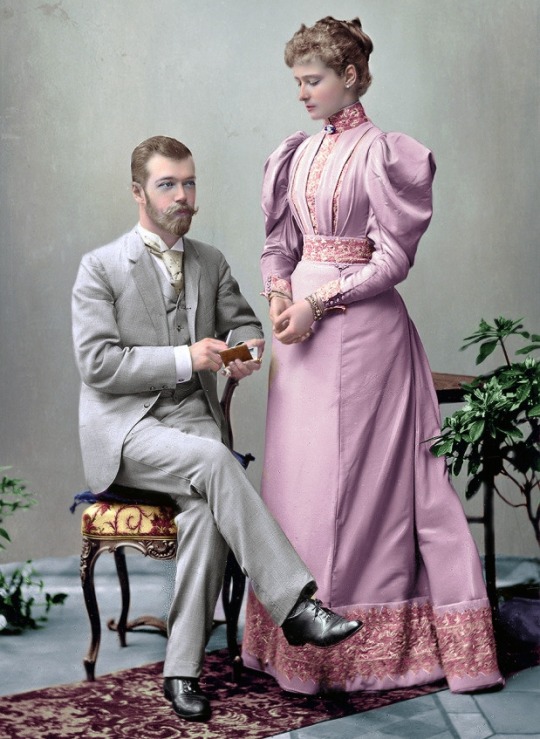
All 57 of the 69 know Fabergé eggs that survive today were manufactured under the supervision of Peter Carl Fabergé between 1885 and 1917.
Following the revolution and the nationalization of the Fabergé workshop in St. Petersburg by the Bolsheviks in 1918, the Fabergé family left Russia.
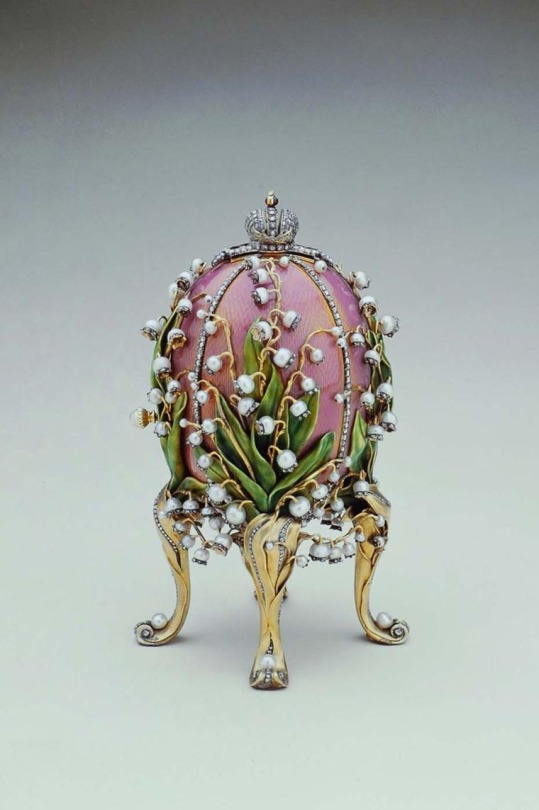

The imperial family's palaces were ransacked and their treasures were moved to the Kremlin Armoury on order of Vladimir Lenin.
The Fabergé trademark has since been sold several times, and several companies have retailed egg-related merchandise using the Fabergé name.

Currently, ten of the imperial Easter eggs are displayed at Moscow's Kremlin Armory Museum.
18 notes
·
View notes
Text
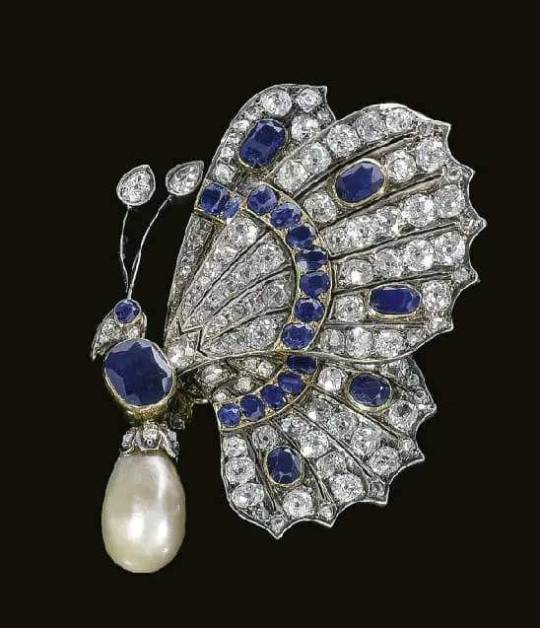
~ "A Butterfly Brooch made of diamonds, sapphires, and pearl. Circa 1890s, made by Peter Carl Fabergé, also known as Karl Gustavovich Fabergé (30 May 1846 – 24 September 1920), who was a legendary artist-jeweller and goldsmith to the Russian Imperial Court." ~
2 notes
·
View notes
Text

The Rock Crystal Egg or Revolving Miniatures Egg is an Imperial Fabergé egg, one in a series of fifty-two jeweled eggs made under the supervision of Peter Carl Fabergé for the Russian Imperial family. It was created in 1896 for Empress Alexandra Fyodorovna. The egg currently resides in the Virginia Museum of Fine Arts.The egg was created by Faberge's workmaster, Mikhail Evlampievich Perkhin (Russian, 1860–1903) with miniatures by Johannes Zehngraf (Danish, 1857–1908)[2] It stands about 248 mm (9 3/4 in) tall on its stand, with a diameter of 98 mm (3 7/8 in.)[3] The outer shell is rock crystal banded with emerald-green enameled gold studded with diamonds. On the apex of the egg is a 27-carat (5.4 g) Siberian emerald supported by an emerald-green enameled gold mount. This cabochon-style emerald is one of the largest gemstones Fabergé used in any of the Imperial eggs.[4] The egg's base sits on a plinth of rock crystal. The base consists of a colorfully enameled gold double spheroid which is circled twice with rose-cut diamonds. It has the monograms of the Tsarina, as the Princess Alix of Hesse-Darmstadt before her marriage, and later as Alexandra Fedorovna, Empress of Russia. Each monogram is surmounted with a diamond crown of the respective royal house.[4] These monograms form a continuous pattern around the base of the egg.Inside the rock crystal egg is a gold support holding twelve miniature paintings. The paintings are of the various palaces and residences that were significant to the Empress. Each location holds a special memory for Nicholas and Alexandra in the early days of their courtship, as they had just been married two years prior, in 1894.
When the large cabochon emerald on the apex is depressed it engages a mechanism that rotates the miniatures inside the egg. A hook moves down and folds the framed pictures back, like the pages of a book, so two paintings can be fully seen at one time.[1] Each miniature is framed in gold with an emerald on the apex. The frames are attached to a central fluted gold shaft which passes vertically through the egg.[4]
The locations include:
The Neues Palais, Darmstadt, Germany: Palace where the Empress was born.
Kranichstein, Hesse: A favorite summer residence of the Empress' youth.
Balmoral Castle, Scotland: Childhood holiday destination of Alexandra's grandmother, Queen Victoria.
Old Grand Ducal Palace (Altes Palais), Darmstadt: Official seat of Alexandra's father, Ludwig IV, Grand Duke of Hesse.
Wolfsgarten, Hesse: Hunting lodge Alexandra's family visited as a child.
Windsor Castle, near London, England: A residence of Queen Victoria where Alexandra visited as a child.
Palace Church, Coburg: Site where Alexandra first consented to marry Nicholas.
Schloss Rosenau, Coburg: A site Nicholas and Alexandra visited the day after their engagement.
Osborne House, Isle of Wight: Site of Nicholas' visit to see Alexandra while they were engaged.
The Winter Palace, St. Petersburg: The site of Nicholas and Alexandra's wedding.
Anichkov Palace, St. Petersburg: Residence of Maria Feodorovna, where Alexandra spent her first year in Russia.
The Alexander Palace, Tsarskoe Selo, near St. Petersburg: the Imperial family's favorite winter residence.The egg was presented by Nicholas II to Alexandra Fedorovna on March 24, 1896. She received it at Eastertide in the same year that the young couple had suddenly ascended the throne.[1]
In 1909 the egg was housed in the Empress' study in the Winter Palace. The egg was seized by the Kerensky Provisional Government and moved to the Armory Palace of the Kremlin in Moscow along with approximately 40 other eggs. In 1930, the Rock Crystal Egg was one of the ten Eggs sold by the Antikvariat (Trade Department) to the Hammer Galleries in New York for 8000 rubles, or approximately $4000 U.S. In 1945 the egg became the last of five Imperial Easter Eggs bought by Lillian Thomas Pratt, the wife of a General Motors executive John Lee Pratt. Upon Lillian Thomas Pratt's death in 1947, the egg was willed to Virginia Museum of Fine Arts, Richmond, Virginia. It remains on view as part of the Virginia Museum of Fine Art's European Decorative Art collection
6 notes
·
View notes
Text
24 settembre … ricordiamo …
24 settembre … ricordiamo …
#semprevivineiricordi #nomidaricordare #personaggiimportanti #perfettamentechic
2020: Corine Rottschäfer, modella olandese, fondò l’agenzia di moda Corine’s Agency con sede ad Amsterdam. Nel 1962 sposò l’architetto e poi politico Edo Spier. (n. 1938)
2017: Gisèle Casadesus, attrice francese. Madre del direttore d’orchestra Jean-Claude Casadesus, dell’attrice Martine Pascal, del compositore Dominique Probst e dell’artista Béatrice Casadesus. Nel 1934, sposa l’attore Lucien…
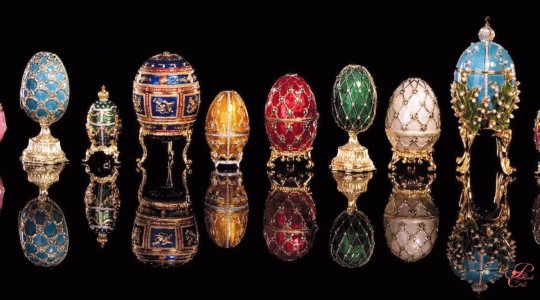
View On WordPress
#24 settembre#24 settembre morti#Baronessa Audley#Corine Rottschäfer#Dorothea Baird#Fabergé#Gisèle Casadesus#Karl Gustavovič Faberže#Lyle Bettger#Neil Hamilton#Peter Carl Fabergé#Ricordando ..#Ricordiamo#Sarah Churchill#Sarah Millicent Hermione Tuchet-Jesson#Sergio Bergonzelli#Siro Carme#Uova Fabergé#Virginia McSweeney
0 notes
Text

L'esteta raffinato.
·
El huevo del palacio de Gat čina es uno de los huevos imperiales Fabergé, un huevo de Pascua enjoyado que el último zar de Rusia Nicolás II dio a su madre la emperatriz viuda Marija, en 1901.
Fue fabricado en San Petersburgo en 1901 bajo la supervisión de Michael Perkhin, en nombre del joyero ruso Peter Carl Fabergé.
El huevo de oro está cubierto de varias capas de esmaltado blanco traslúcido sobre un fondo arabescate con técnica lila y pintado con un delicado dibujo de rosas rosas y guirnaldas de hoja verde y dorado atadas con cintas rojas en una variedad de fe tabla S.
Los hilos de cuentas dividen el huevo en doce paneles: verticalmente en seis clavos y horizontalmente a lo largo del borde de apertura. Los diamantes delgados cortados en losas se fijan en ambos extremos, probablemente para cubrir el monograma y el año del regalo, que sin embargo han sido eliminados. El interior está forrado con terciopelo.
La parte superior del huevo se abre para revelar una reproducción de oro en miniatura de cuatro colores de la residencia principal de invierno de la Emperatriz Viuda: el palacio construido en Gatchina, un pueblo a 45 kilómetros al suroeste de San Pi Etroburg, para el conde Grigorij Grigor'evi č Orlov y la ter comprado por el zar Paolo I.
La miniatura reproduce en detalle el área alrededor del edificio, hay cañones, una bandera, una estatua de Pablo I y elementos del paisaje.
11 notes
·
View notes